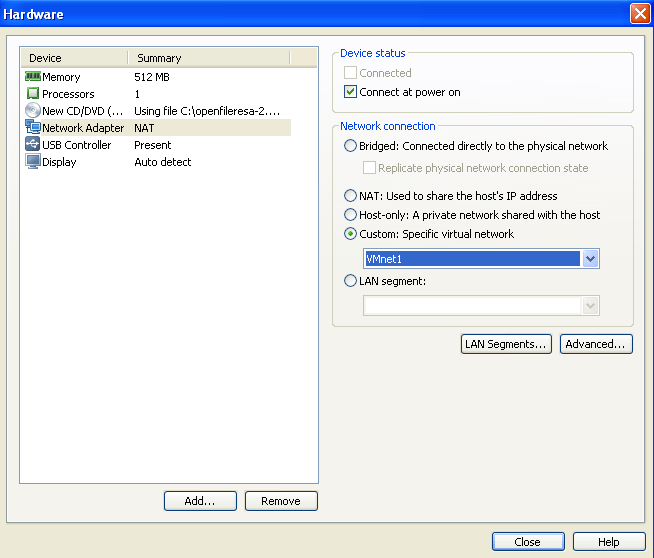How To Install Openfiler From Usb


Jun 30, 2016 - The first challenge came up when attempting to install OpenFiler from a USB drive. Using Rufus to transfer the installation ISO to a flash drive didn't work as intended, apparently you need to copy the ISO over to the flash drive as well. I am thankful for a couple of people that posted this info as it probably. Copy the initrd file you made on the hard disk install of Openfiler to the USB drive installation. Note: please add a space and then the dot (.) so it will copy the file keeping the same name as the source. Power cycle (power off (shutdown) the system and then boot from the USB drive. 3ds Max Indesign 2015 Keygen Download. Wic Reset Key Free Download on this page.
Details / Overview Recently I had the need to boot Openfiler from a USB flash (thumb) drive. Note: This installation method requires a Openfiler install to a hard disk, along with the USB drive I am using the hard drive installation to create a usb-storage enabled initrd file and then I copy this new file to the USB drive so that I can boot properly. What is an initrd file? An initial ramdisk is a temporary file system used in the boot process of the Linux kernel Requirements: 1. Openfiler CD or CD image 2. VMware Workstation / Server / Player 3. Or Computer with hard drive 4.
USB Drive Procedure: 1. Get the Openfiler installation CD image (burn it if you need to install onto computer hardware) or simply mount this to Workstation / Server to boot from 2. Install Openfiler on hard drive (physical or virtual) 3. Install Openfiler on USB Drive. I used ‘expert’ mode Be sure to properly format your drive (hard disk & USB) 4. Remove your USB drive after install and boot the hard drive install of Openfiler 5. Log into the hard drive installation as root and change to the boot directory using “cd /boot” 6.
Save the current initrd file as a backup by typing “mv.backup You can make use of the key to auto complete the names of the files you are working with. One of this simple things that help and ensure you do not make mistakes. Run mkinitrd to create a new initrd with the usb-storage module included.
This module is what is needed to permit the kernel to boot properly from the USB drive. Type the following: “mkinitrd –preload=usb-storage One of the things that gave me an issue with the kernel version. To find this I typed the following: “uname -r” to show the version I was running.
You should now have the new initrd file. You can confirm this by listing the directory. Insert your USB drive. The system should auto detect this drive and show you the device id. If you missed this you can type the following: “fidsk -l” will list all the drive devices.
Be sure to select the correct drive (USB drive). Mount the boot partition of the USB drive and change to that directory.
In my setup this was /dev/sdb1/ You can also do a “cat /proc/partitions’ and find the correct device in the partition list. Type the following: mkdir /media/usb mount /dev/sdb1 /media/usb cd /media/usb 10. Save the current initrd file on your USB drive to another name Type the following: “mv.backup 11. Copy the initrd file you made on the hard disk install of Openfiler to the USB drive installation. Type the following: “cd /boot/” Note: please add a space and then the dot (.) so it will copy the file keeping the same name as the source. After the copy, check to make sure the new initrd is there.
After the copy you can unmount the USB drive to make sure all files have been synced properly Type the following: cd /.
We just received a new storage server from DELL which will be used to host web server cluster. We will use Openfiler, a free NAS/SAN operating system to manage our RAID-10 storage. The problem we have now is our storage server has no optical drive and we do not have any external optical drive available here in office. Alternatively, we can use USB stick drive and make sure our server are able to boot from USB. Server: DELL PowerEdge R510 OS version: Openfiler 2.99 64bit USB flash drive: /dev/sdb RAID 10 virtual disk: /dev/sda Preparing the Flash Drive 1. Download the ISO from into your local PC.